15.1 Interpreting and Explaining
High-Stakes Applications
- healthcare
- Why does it say I’m at high risk for heart disease?
- Why did my insurance company deny my claim?
- criminal justice (e.g., ProPublica COMPAS))
- Why was this defendant denied bail?
- Why target this neighborhood for increased policing?
- finance
- Why was my loan application denied?
- Why was my transaction flagged as fraudulent?
- hiring
- Why was my job application rejected?
- Why was I not promoted?
Outline
- Explaining black-box models
- Feature importance (permutaton)
- Global explanations (partial dependence)
- Local explanations (SHAP, LIME)
- Interpretable models
- Decision rule lists
- Additive risk score models
Interpretability vs Explainability
- Interpretability: can we understand how the model works?
- Explainability: can we explain why the model made a particular prediction?
Explaining Black-Box Models
Black-box model: a model that is difficult to interpret (e.g., random forest, gradient boosting model, deep neural network)
Why explain?
- Debugging
- Feature Engineering
- Collaborating with domain experts
- Helping users understand when to trust a model
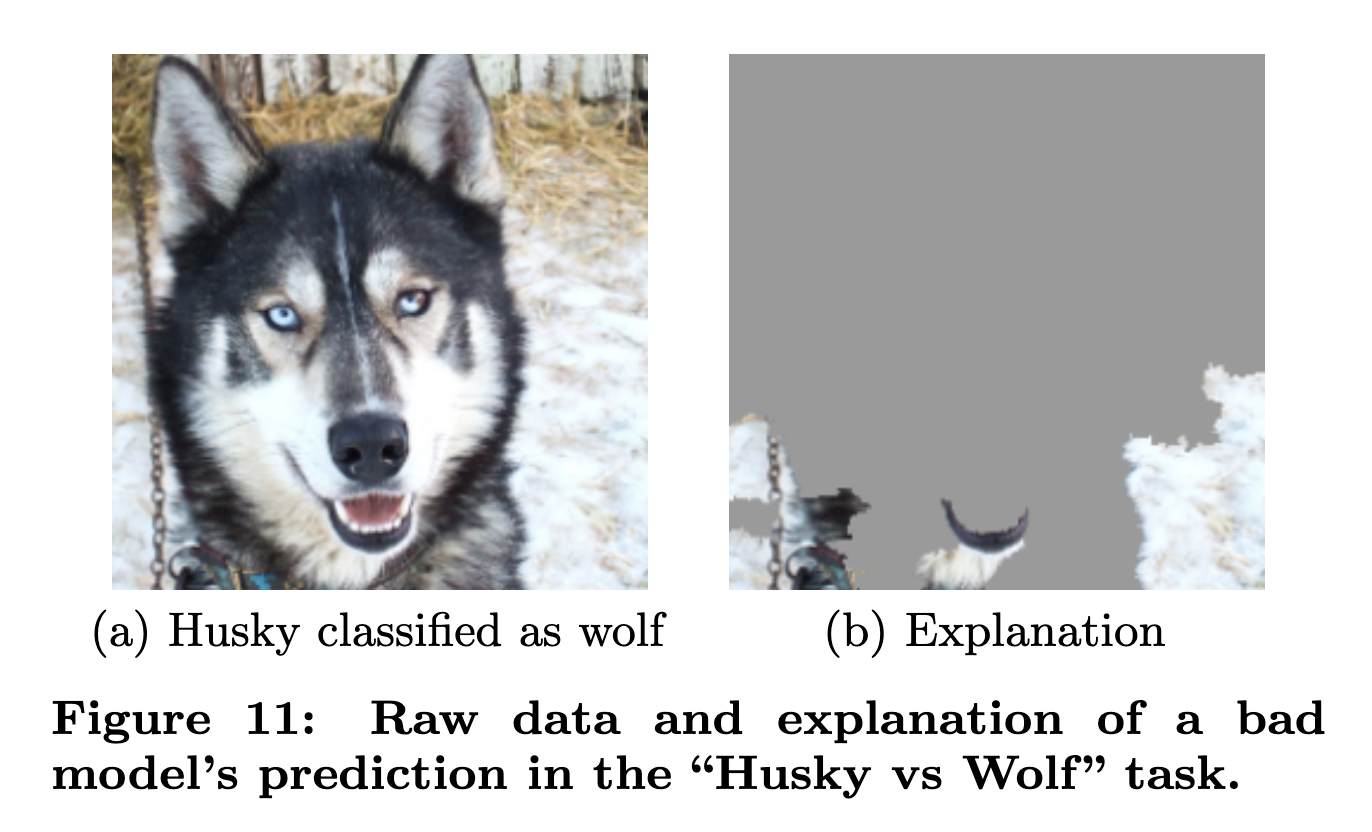
Image from: “Why Should I Trust You?”: Explaining the Predictions of Any Classifier | Abstract
Feature Importance
- We gave the model many features, but which ones did it use?
- Simple approach: remove each feature and see how much the model’s performance decreases
- but we’d have to retrain the model many times
- if two features are correlated, removing one might not affect the model’s performance
- Faster approach: permutation feature importance: scramble the values of each feature; how much does the model’s performance decrease?
- But doesn’t fix the problem of correlated features
Read more:
Partial Dependence Plots
- How does the model’s prediction change (in general) as we vary a feature?
- Individual conditional expectation (ICE) plot: compute the prediction for each row in the test set as we vary a feature
- Partial dependence plot: plot the average test-set prediction when we set a feature to a particular value; repeat for different values
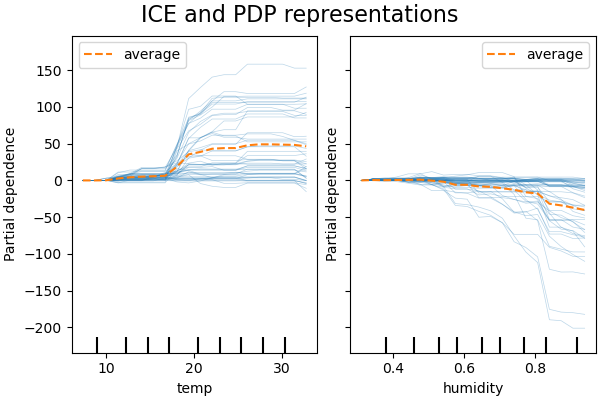

Read more:
Local Explanations
- For a particular prediction, which features were most important?
- Might be different from the global feature importance
- SHAP: Shapley values from game theory
- intuition: How much would the prediction change if we removed each feature?

Predicting “Man of the Match” award in a soccer game:

Read more:
- Interpretable Machine Learning book chapter (source for the bikeshare example)
- Kaggle course (source for the soccer example): SHAP Values
- SHAP: A Unified Approach to Interpreting Model Predictions
Local Explanations (LIME)
- Local Interpretable Model-Agnostic Explanations
- Train a simple model to approximate the black-box model’s predictions

Read more:
Interpretable Models
Instead of making a black-box model interpretable, we can use an interpretable model from the start.
Simple Models
- Linear regression, logistic regression (with a small number of features and few interactions)
- Lasso Regularization can help select a small number of features
- Shallow decision trees
- Naive Bayes
- k-Nearest Neighbors
Read more:
Decision Rule Lists
- A list of rules that can be used to make a prediction
- Example: CORELS (Certifiably Optimal RulE ListS)

Read more:
Additive Risk Score Models: FIGS
Fast Interpretable Greedy Tree Sums (FIGS): website, paper. Train a collection of decision trees, where the prediction is the sum of the predictions from each tree.
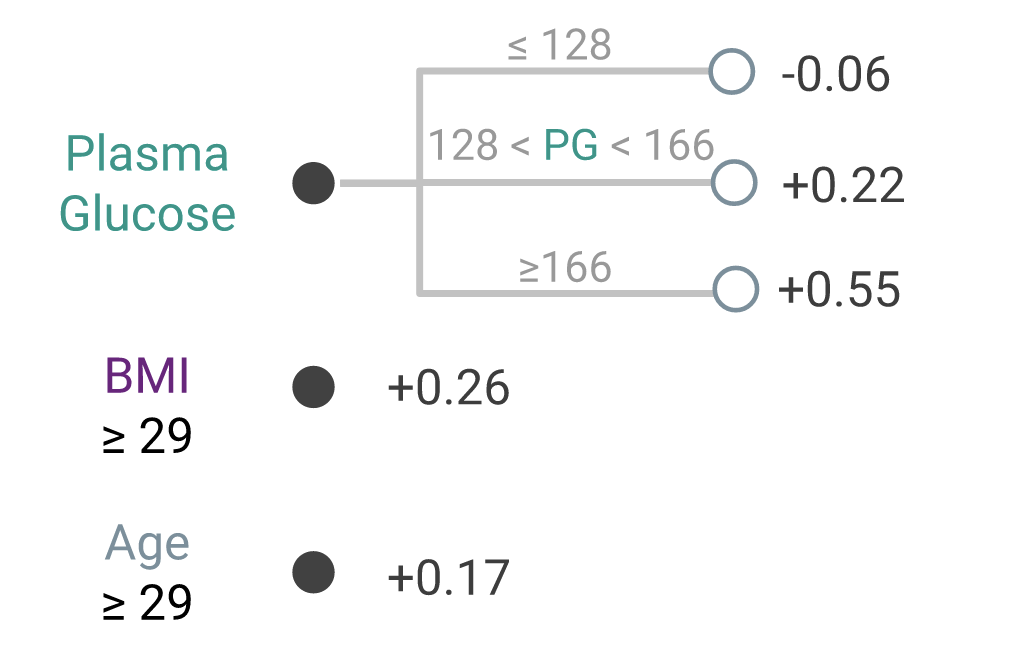
Additive Risk Score Models: Risk Scorecards
ustunb/risk-slim: simple customizable risk scores in python
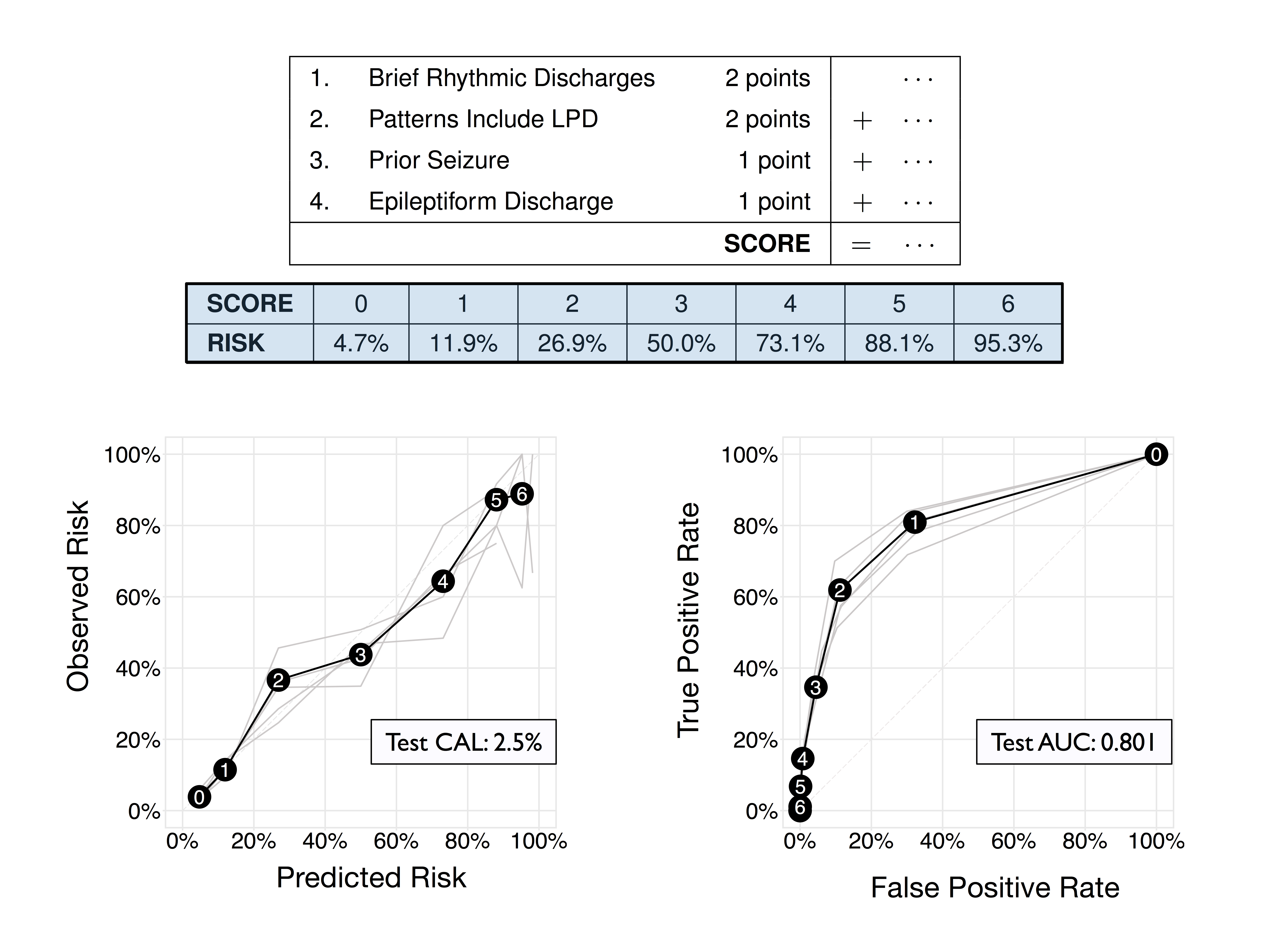
Fast and Interpretable Mortality Risk Scores for Critical Care Patients
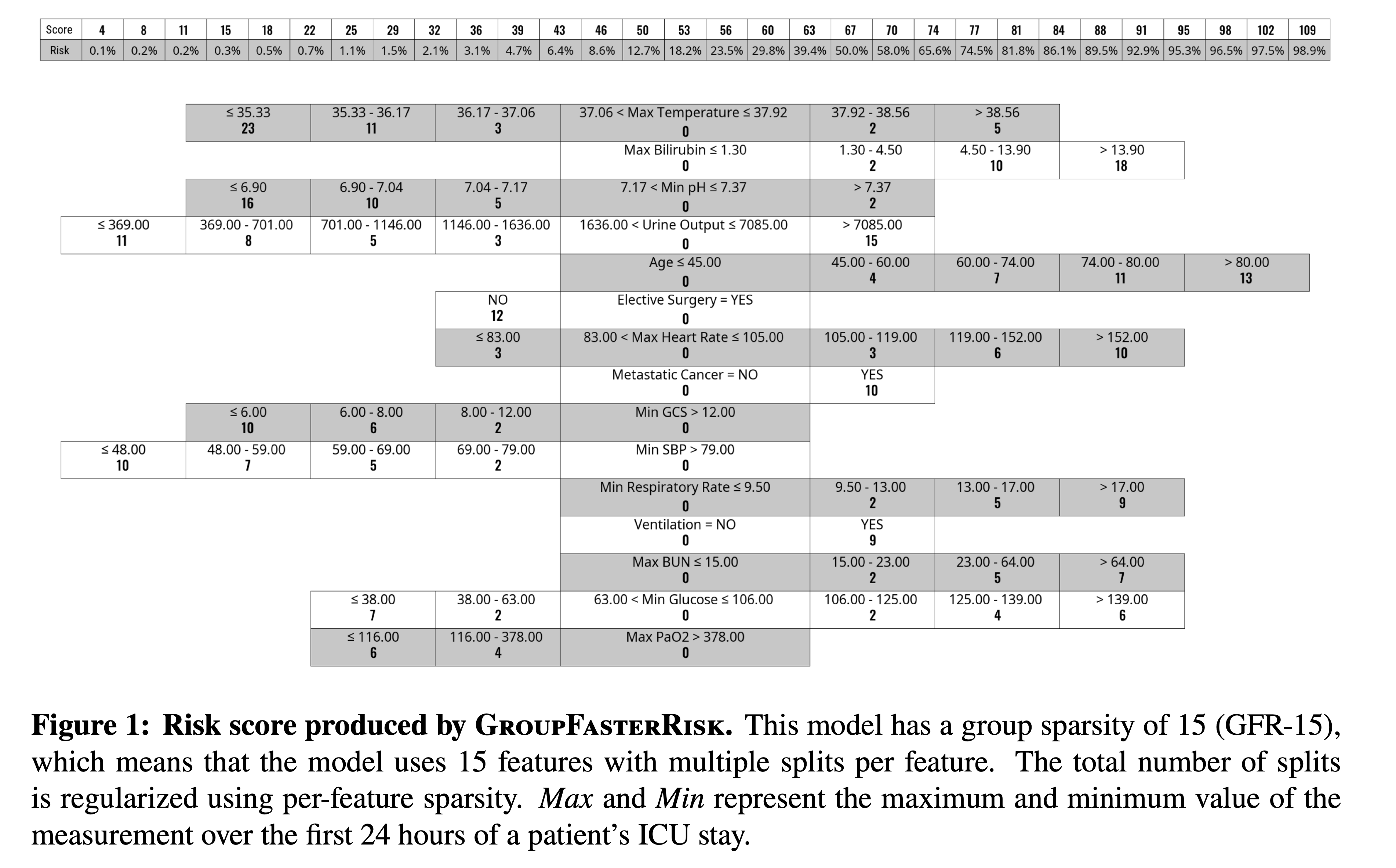
Going Further
- Interpretable Machine Learning
- Interpretable Machine Learning: Fundamental Principles and 10 Grand Challenges
- Stop explaining black box machine learning models for high stakes decisions and use interpretable models instead | Nature Machine Intelligence Dissecting scientific explanation in AI (sXAI): A case for medicine and healthcare - ScienceDirect